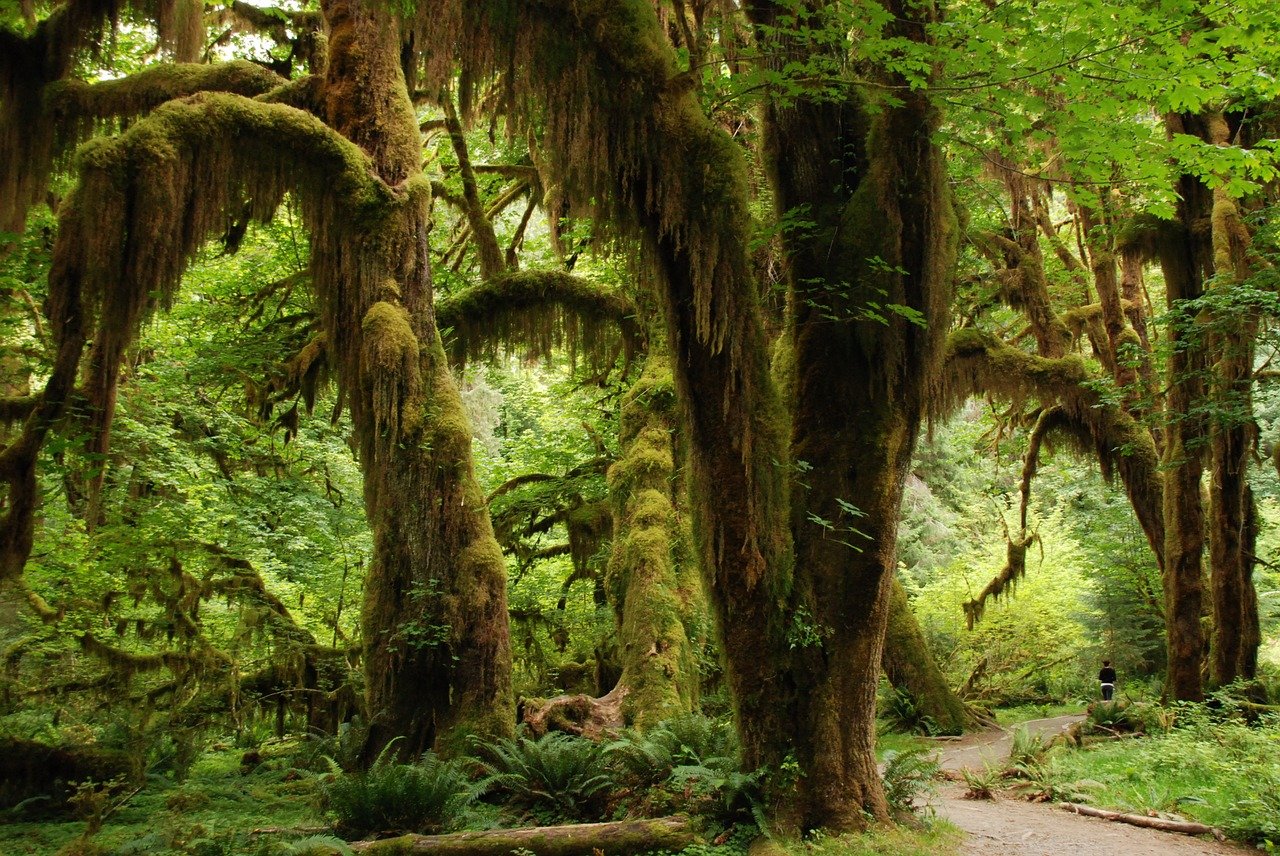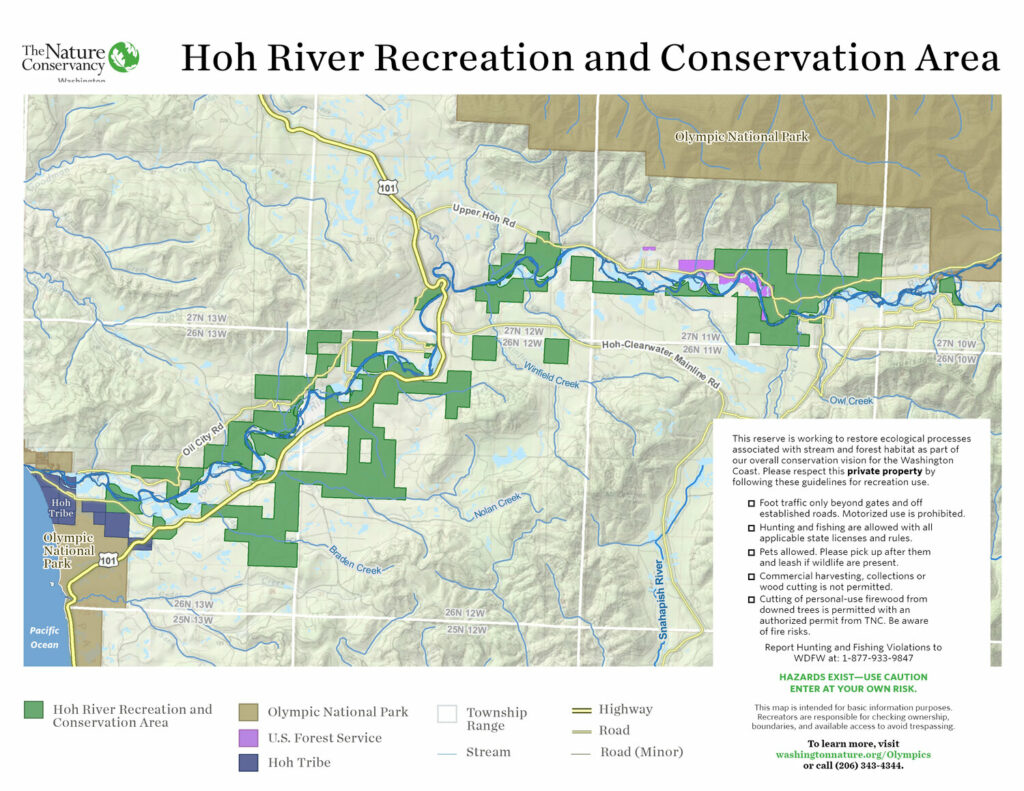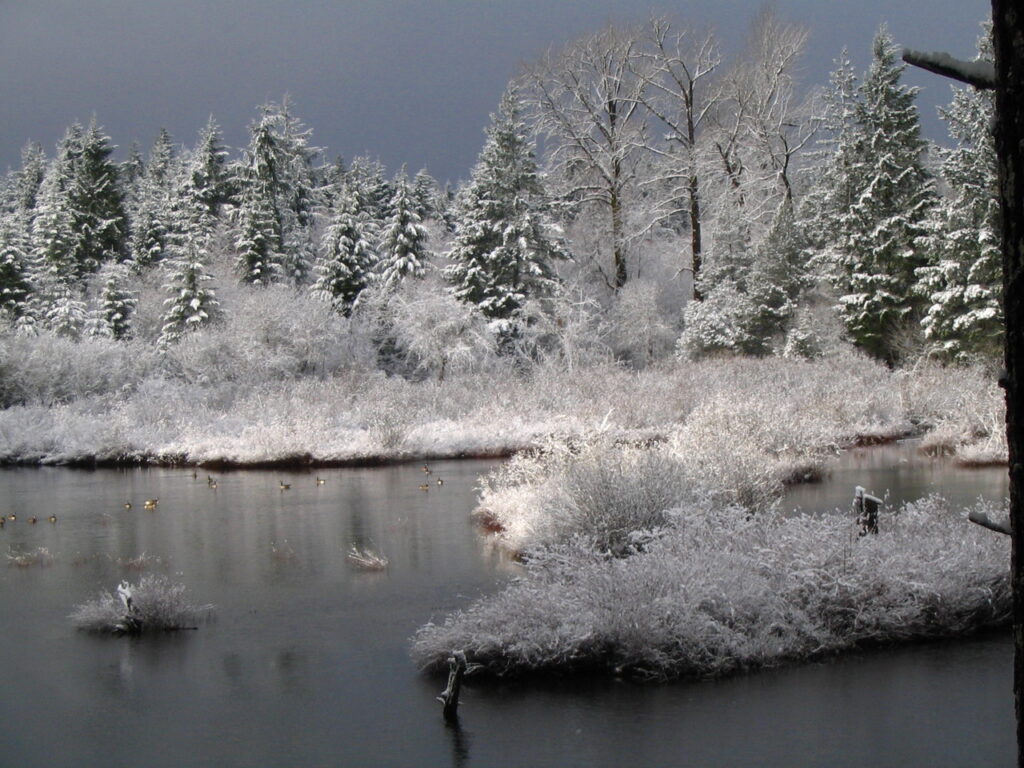Hoh River Recreation & Conservation Area Obtains FSC® Certification!

NNRG is pleased to announce the addition of the Hoh River Recreation and Conservation Area to our FSC® Group Certificate!
The forest is being thoughtfully managed and restored by The Nature Conservancy in Washington. We’re welcoming some of this forest back into the fold of certification; from 2013 to 2017, 6,600 acres of this forest were owned by the Hoh River Trust and were certified under their management.
A rainforest of salmon
The Hoh River Recreation and Conservation Area makes up 10,000 acres of forest along the Hoh River in Washington’s Olympic Peninsula. The Hoh River is one of the most important rivers in the West for wild salmon and steelhead, and The Nature Conservancy in Washington is working to protect and restore the forests along this iconic river.
Their restoration work includes forest thinning and planting trees to increase natural diversity, adding logjams to streams, repairing culverts to create more salmon habitat, and fixing forest roads, which can wash out and deliver damaging sediment to streams. Many of the jobs associated with the restoration are going to local residents.
The area is open to the public for hunting and fishing (with applicable state licenses) hiking, and bird-watching — note that you may encounter restoration crews at work while you’re there!
To learn more about the Hoh River Recreation and Conservation Area, visit The Nature Conservancy’s website.

What does it mean to have the gold standard of forest product certification?
Forest Stewardship Council® (FSC®) certification is a market-based, voluntary system for ensuring that wood products come from well-managed forests. FSC® is the most rigorous forest products certification available, and is internationally recognized.
To achieve and maintain FSC® certification, a forest must meet certain standards of responsible forest stewardship that go beyond most state and federal forest management requirements.
- The forest must have a Forest Management Plan, and that plan must be updated every 10 years at a minimum.
- Forest owners must monitor forest attributes such as growth of newly planted seedlings, location and presence of invasive species, fish and wildlife abundance, and snags and downed logs.
- FSC® prohibits the use of certain hazardous chemicals, and encourages forest management strategies that minimize the use of other chemicals.
- In addition to requiring riparian buffers that are often more stringent that state standards, FSC® requires that harvests larger than 6 acres retain 10-30% of pre-harvest basal area (basically, wood!). Retained trees must reflect the pre-harvest diversity of species and size classes, including large and old trees.
Forest Stewardship Council® and Northwest Natural Resource Group
FSC®-certified members of NNRG’s group certificate receive the public recognition and market access that comes with managing a forest to the highest standard in the world.
Our members own woodlands that represent the incredible diversity of forest communities found across the Pacific Northwest. They span the temperate rainforests of the Hoh River valley to the ponderosa foothills of Leavenworth. They range from forests of Port Orford cedar and myrtlewood along the southern Oregon Coast, to the oak woodlands of the Willamette Valley and San Juan Islands. They include groves of giant western redcedar tucked into the Willapa Hills and along the flanks of Mount Baker. And of course, all of our members grow Douglas-fir, the iconic species that unifies our region.

NNRG’s FSC® group certificate comprises 89 forests in Washington and Oregon. Our members include land trusts, municipal governments, tribes, religious organizations, youth camps, and dozens of family-owned forests. They run the gamut in size — from 10 acres to over 90,000 — and objectives: some using commercial harvests as an opportunity to promote understory species diversity, others focused on restoring rare habitats suitable for endangered wildlife, and still others preparing their forests for a warmer, drier future and even experimenting with different seedling sources and tree species.
Forests in NNRG’s FSC® group certificate are depicted on the map below. Zoom in on the map to explore where ecologically-managed forests are in relation to each other.
Some forests have been anonymized at the request of the landowners.
A mobile-friendly version of this map is available here.
Get certified
NNRG administers a group certificate for landowners and managers in Washington and Oregon (FSC License Code FSC-C008225). Group certification offers a more efficient and lower cost method of certification for small landowners by reducing monitoring requirements for each individual landowner, instead relying on a sampling technique to ensure consistency with the FSC standard.
Learn more about FSC certification through NNRG here.
NNRG is pleased to announce the addition of the Hoh River Recreation and Conservation Area to our FSC® Group Certificate!
The forest is being thoughtfully managed and restored by The Nature Conservancy in Washington. We’re welcoming some of this forest back into the fold of certification; from 2013 to 2017, 6,600 acres of this forest were owned by the Hoh River Trust and were certified under their management.
A rainforest of salmon
The Hoh River Recreation and Conservation Area makes up 10,000 acres of forest along the Hoh River in Washington’s Olympic Peninsula. The Hoh River is one of the most important rivers in the West for wild salmon and steelhead, and The Nature Conservancy in Washington is working to protect and restore the forests along this iconic river.
Their restoration work includes forest thinning and planting trees to increase natural diversity, adding logjams to streams, repairing culverts to create more salmon habitat, and fixing forest roads, which can wash out and deliver damaging sediment to streams. Many of the jobs associated with the restoration are going to local residents.
The area is open to the public for hunting and fishing (with applicable state licenses) hiking, and bird-watching — note that you may encounter restoration crews at work while you’re there!
To learn more about the Hoh River Recreation and Conservation Area, visit The Nature Conservancy’s website.

What does it mean to have the gold standard of forest product certification?
Forest Stewardship Council® (FSC®) certification is a market-based, voluntary system for ensuring that wood products come from well-managed forests. FSC® is the most rigorous forest products certification available, and is internationally recognized.
To achieve and maintain FSC® certification, a forest must meet certain standards of responsible forest stewardship that go beyond most state and federal forest management requirements.
- The forest must have a Forest Management Plan, and that plan must be updated every 10 years at a minimum.
- Forest owners must monitor forest attributes such as growth of newly planted seedlings, location and presence of invasive species, fish and wildlife abundance, and snags and downed logs.
- FSC® prohibits the use of certain hazardous chemicals, and encourages forest management strategies that minimize the use of other chemicals.
- In addition to requiring riparian buffers that are often more stringent that state standards, FSC® requires that harvests larger than 6 acres retain 10-30% of pre-harvest basal area (basically, wood!). Retained trees must reflect the pre-harvest diversity of species and size classes, including large and old trees.
Forest Stewardship Council® and Northwest Natural Resource Group
FSC®-certified members of NNRG’s group certificate receive the public recognition and market access that comes with managing a forest to the highest standard in the world.
Our members own woodlands that represent the incredible diversity of forest communities found across the Pacific Northwest. They span the temperate rainforests of the Hoh River valley to the ponderosa foothills of Leavenworth. They range from forests of Port Orford cedar and myrtlewood along the southern Oregon Coast, to the oak woodlands of the Willamette Valley and San Juan Islands. They include groves of giant western redcedar tucked into the Willapa Hills and along the flanks of Mount Baker. And of course, all of our members grow Douglas-fir, the iconic species that unifies our region.

NNRG’s FSC® group certificate comprises 89 forests in Washington and Oregon. Our members include land trusts, municipal governments, tribes, religious organizations, youth camps, and dozens of family-owned forests. They run the gamut in size — from 10 acres to over 90,000 — and objectives: some using commercial harvests as an opportunity to promote understory species diversity, others focused on restoring rare habitats suitable for endangered wildlife, and still others preparing their forests for a warmer, drier future and even experimenting with different seedling sources and tree species.
Forests in NNRG’s FSC® group certificate are depicted on the map below. Zoom in on the map to explore where ecologically-managed forests are in relation to each other.
Some forests have been anonymized at the request of the landowners.
A mobile-friendly version of this map is available here.
Get certified
NNRG administers a group certificate for landowners and managers in Washington and Oregon (FSC License Code FSC-C008225). Group certification offers a more efficient and lower cost method of certification for small landowners by reducing monitoring requirements for each individual landowner, instead relying on a sampling technique to ensure consistency with the FSC standard.

Leave a Reply